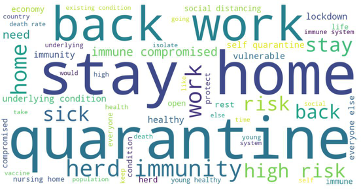Abstract
Objectives: This study examined public discourse and sentiment regarding older adults and COVID-19 on social media and assessed the extent of ageism in public discourse.
Methods: Twitter data (N=82,893) related to both older adults and COVID-19 and dated from January 23 to May 20, 2020, were analyzed. We used a combination of data science methods (including Linguistic Inquiry and Word Count, supervised machine learning, topic modeling, and sentiment analysis), qualitative thematic analysis, and conventional statistics.
Results: The most common category in the coded tweets was “personal opinions” (66.2%), followed by “informative” (24.7%), “jokes/ridicule” (4.8%), and “personal experiences” (4.3%). The daily average of ageist content was 18%, with the highest of 52.8% on March 11, 2020. Specifically, more than one in ten (11.5%) tweets implied that the life of older adults is less valuable or downplayed the pandemic because it mostly harms older adults. A small proportion (4.6%) explicitly supported the idea of just isolating older adults. Almost three-quarters (72.9%) within “jokes/ridicule” targeted older adults, half of which were “death jokes.” Also, 14 themes were extracted, such as perceptions of lockdown and risk. A bivariate Granger causality test suggested that informative tweets regarding at-risk populations increased the prevalence of tweets that downplayed the pandemic.
Discussion: Ageist content in the context of COVID-19 was prevalent on Twitter. Information about COVID-19 on Twitter influenced public perceptions of risk and acceptable ways of controlling the pandemic. Public education on the risk of severe illness is needed to correct misperceptions.
Keywords: COVID-19, ageism, machine learning, social media, Twitter
